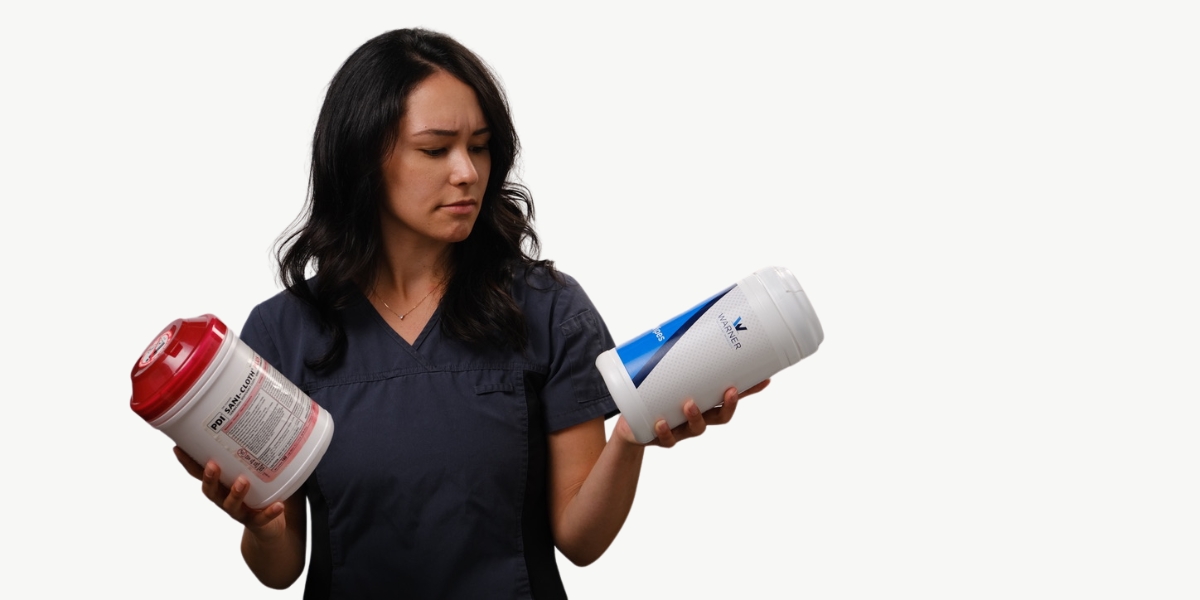Our infection control training program teaches the fundamentals and some of the science behind hygienic reprocessing, including when and how to do it. However, not all equipment can be reused in hearing care, and this is an area where we have seen some recurring mistakes being made, either because of a lack of training and understanding, as a cost and time-saving measure, or in an effort to be more environmentally friendly. Before we go any further, let’s clarify which products are generally single-use disposable and which are safe to reuse (if reprocessed correctly).
Reusable clinical equipment
Here is a list of equipment in the hearing clinic that is single-use or disposable:
- Lighted curettes
- Other plastic curettes
- Most otoscope specula, especially plastic (some exceptions apply)
- Foam ear inserts
- Tympanometry probe tips
- Hearing aid couplers, including domes and ear molds
- Hearing aid tubing and thin tubes
- Hearing aid speakers/receivers for receiver-in-canal devices
- Real ear probe microphones
- Anything designated as single-use by the manufacturer
- Anything that does not include reprocessing instructions or guidelines
Reusable clinical equipment
Reusable equipment needs to undergo hygienic reprocessing, which is the detailed multistep process of cleaning and then disinfecting or sterilizing reusable medical devices. We see frequent errors being made here, which tend to be passed down. The most common mistakes here are trying to reprocess and reuse products that were designed to be single-use, and inadequately reprocessing tools for re-use. If the equipment you are attempting to reprocess does not have reprocessing instructions from the supplier or manufacturer, then it is likely meant to be disposed of after a single use. Below is a list of products that typically can be re-used, but first let’s review the process of hygienic reprocessing, which involves four steps:
- Use – This part is easy – you use a new or reprocessed clinical tool with a patient or their hearing aids.
- Cleaning – After using the instrument, there is initial decontamination to remove gross contamination and debris, such as wiping the cerumen off a stainless-steel curette.
- Disinfection or Sterilization – Only after cleaning do you use one of these two methods to decrease the spread of pathogens between clients. Which one you will use depends on the equipment or surface, and what it came into contact with.
- Storage – The device awaits reuse, or the surface stays clean until the next client.
Cleaning vs. disinfection vs. sterilization for hearing care
Cleaning or sanitizing reduces gross contamination on soiled instruments and typically precedes disinfection or sterilization. It does not aim to eliminate bacteria. The reason cleaning is so important is that if the instrument is dirty, then the efficacy of disinfection or sterilization is diminished.
Disinfection eliminates or reduces microorganisms from objects and surfaces but does not destroy all microorganisms. Disinfection is broken up into levels based on how many microorganisms it kills:
- Low-level disinfectants destroy vegetative bacteria and some fungi and viruses but not mycobacteria or bacterial spores. This process is used on non-critical items and environmental surfaces like patient seating and door handles in the clinic.
- Intermediate-Level Disinfectants destroy low-level pathogens plus mycobacteria. This process is used on some non-critical items and some semi-critical items, as well for environmental surfaces used in patient care, and the lab desk surface.
- High-level disinfectants destroy or irreversibly inactivate all microbial pathogens, but not necessarily bacterial spores. This process is used on semi-critical items such as those that encounter non-intact skin.
Sterilization kills 100% of vegetative microorganisms.
List of clinical items requiring disinfection:
- Response button
- Battery source for lighted curettes
- Otoscope handle and housing
- Booth and equipment surfaces and buttons
- Door handles and touched surfaces
- Table surfaces
- Anything else that the clinician or patient is touching during the appointment
List of clinical items requiring sterilization:
- Reusable stainless-steel curettes and other ear tools
- Stainless suction probes for cerumen removal
- Vacuum tips for hearing aid vacuums
- Stainless tweezers and other tools used to work on hearing aids
- Reusable stainless-steel (and some plastic) specula
Tools for cleaning, disinfection, and sterilization in hearing care:
Cleaning:
- Soap and water – hands
- Audio wipes – surfaces and tools prior to disinfection or sterilization
- Ultrasonic cleaner – tools prior to sterilization
Disinfect:
- Sporox or Wavicive – used to soak tools in a metal tray, typically for 30 minutes
- Sani-cloth – a low or intermediate-level disinfectant appropriate for non-spoiled clinic surfaces
Sterilization:
- Sporox or Wavicide – used to soak tools in a metal tray, typically for 6+ hours
Disinfecting and sterilizing look similar, but the soaking time is 12 times longer to achieve sterilization. Since this is typically done at the end of a day and overnight, our strong recommendation is to sterilize all tools that would go in the tray prior to use, rather than to disinfect. Setting up for sterilization at the end of the day and letting it run overnight is a great option.
Sterilization fluid needs to be changed according to the manufacturer recommendations, which is typically every three to four weeks.
For those looking to learn more, we offer a comprehensive training program on infection control for hearing care professionals, along with two micro courses on our free Learn On platform.
f you found this blog helpful, please share it on social media!




